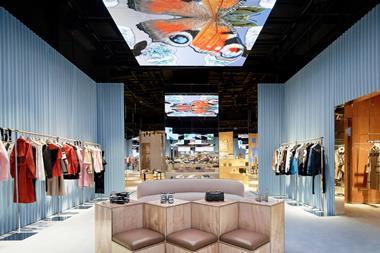Asian markets, particularly China, are often looked at by those in the West as leaders in applying cutting-edge technology and innovation to the retail sector.
Now that parts of the continent are beginning to move back to life as ‘normal’, many are continuing to pay close attention, but this time for signs of what might be on the horizon for the West post-pandemic.
As a digital retail agency, This Place has seen first-hand the impact Covid-19 has had on our global clients. We recently released our 7 New Rules for Retail report, featuring insights from conversations with global retail leaders, including leaders in East and South East Asian markets.
From these conversations, it is clear that while many of the impacts of the pandemic on retail have been uniformly felt across the globe, there are key differences that cannot be ignored.
The social nation
Throughout the pandemic, Chinese retailers and technology giants have upheld their reputation for embracing channel innovation.
During the height of the outbreak, many physical stores were forced to close, leading to a surge in retailers turning to social channels.
Through conversations with regional retail leaders, we have heard of companies redeploying their in-store sales teams to online communications with local customers – via WeChat mini-programs, live streaming and short videos – in some cases reaching record sales figures for the period.
Shanghai-based cosmetics brand Forest Cabin did just this, training store staff to use Taobao Live and driving a 45% year-on-year sales increase. Taobao itself reported a 110% increase in sales year on year across the platform.
“Crucially, in China, social experiences were not just used to plug the gap in revenue from stores but also to attract customers back to the physical stores”
One of the reasons these experiences gained so much traction during the pandemic is that they allowed customers to replicate the social aspects of shopping that lockdown restrictions removed. Pinduoduo, the Chinese social commerce platform, has seen explosive growth and beyond China, new platforms like Singapore’s Shopavision are capitalising on growing customer appetite for social shopping.
Crucially, in China, social experiences were not just used to plug the gap in revenue from stores but also to attract customers back to the physical stores. In the past few months, Burberry’s social retail store and Nike’s Rise concept store have demonstrated the continued willingness of retailers to invest in blended digital and physical experiences in China.
The grocery rush
Across the globe, the pandemic drove a spike in online grocery demand.
In response, many retailers turned to third-party last-mile delivery platforms, with JD Logistics and Meituan seeing increased usage.
However, as pointed out in our 7 New Rules for Retail report, it is important for retailers to carefully consider the strategic merit of partnerships. Globally, some retailers are now moving away from third-party last-mile delivery platforms, preferring to hold on to the customer data and relationship for themselves.
“Where certain Asian markets seem to have an advantage is in having invested for many years prior to the pandemic in compelling digital and blended digital-physical experiences”
On the flip side, across East and South East Asia, fulfilment experts like Foodpanda and Grab saw the boom in grocery delivery as an opportunity to diversify their own businesses.
Rather than providing last-mile services for existing grocers, as we have seen Deliveroo and Uber do in the West, both set up their own grocery businesses. Pandamart and GrabMart offered rapid delivery of groceries, health and beauty items and household supplies, providing an extremely convenient alternative to grocery stores.
The loyalty divergence
Our report also highlights the need for retailers to drive loyalty through purpose.
The trend of retailers turning towards purpose-driven loyalty (for example, the M&S Sparks charity donation perk) has been developing in the West for a number of years, but based on our conversations with regional retail leaders, this trend has not been widely replicated across East and South East Asia.
Taking China in particular, only time will tell whether this trend will ultimately play out; given the hyper-competitive market, loyalty schemes have typically focused on attracting customers through discounts and exclusive savings.
Perhaps in this landscape, a loyalty scheme based on purpose could be a great differentiator. Or perhaps it would be lost in a sea of loyalty schemes that are catering to the short-term needs of customers watching their spending post-Covid. One to watch.
So what can we learn?
Overall, the impacts of a global pandemic on life, society and business have been consistent across the world.
There are bound to be winners (and quite a few losers) in what is probably the biggest change to retail of our lifetimes.
Where certain East and South East Asian markets – particularly China – seem to have an advantage is in having invested for many years prior to the pandemic in compelling digital and blended digital-physical experiences.
Will they rebound quicker? Only time will tell, but as of today, the signs are looking positive.
Given this, the lesson for retailers in the West is that now is the time to re-evaluate your digital strategy.
Are you capitalising on new customer behaviours? Are you delivering seamless interactions across channels? Are you building for a digital future in which customers shop more locally and socially? And if not, what are you waiting for?
Scott Gillson is business director of This Place

Scott leads the growth of This Place across Europe, Asia and North America. He has spent the last 15 years consulting for global clients such as Yamaha, Disney, Sky and many more. His focus at This Place is driving results for clients, fast. Recently launching the This Place Espresso methodology, getting clients from problem to prototype in just six days. A great starting position for anyone looking for results in days not months. Prior to joining This Place, he held positions at Waitrose, EY and McKinsey.






























